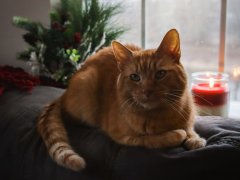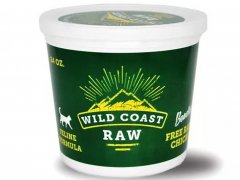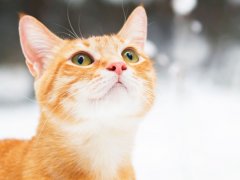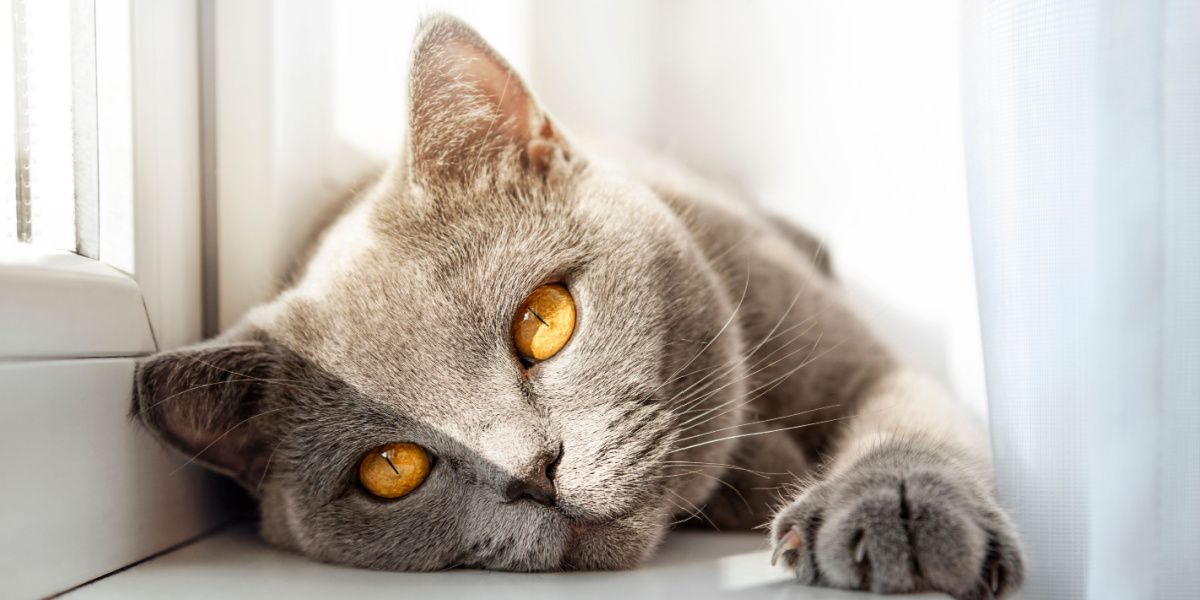
Cats love to bask in the sun. But you might have noticed that, despite the heat, your cat doesn’t get sweaty. In fact, unlike dogs, they don’t seem to pant either. So, if they don’t pant, and they don’t sweat, how do cats stay so cool? The truth is that cats do sweat (a little bit), it just isn’t their main way of staying cool.
Domestic cats are descended from the African wild cat, which lived in the roasting hot African Savannah. As a result, they have evolved to be masters of keeping themselves cool. Read on to learn how cats sweat, how they stay cool, and what to do if your cat gets too hot.
Key Takeaways
Cats do sweat, but they have far fewer sweat glands than humans so it is not their main method of keeping cool.
To keep their body temperature down, cats tend to find a cool, shady spot to nap in during the hottest part of the day.
Always remember to provide your pets with plenty of fresh water and access to cool, shady areas.
How Do Cats Sweat?
Cats do sweat, but they have much fewer sweat glands than we do. These sweat glands are only found on hairless areas of their body, like their chin, lips, and paw pads. When your cat feels hot, their brain sends a signal to the sweat glands to start sweating. As the sweat evaporates it cools their skin.
Stress can also trigger this sweating response, which is why you might notice your cat leaving little damp footprints on the table when they visit the vet.
Because cats only have a few sweat glands across a small surface area, it isn’t a very efficient way of cooling them down. This means that although they do sweat a bit when it’s warm, they mostly rely on other methods to stay cool.
How Do Cats Stay Cool?
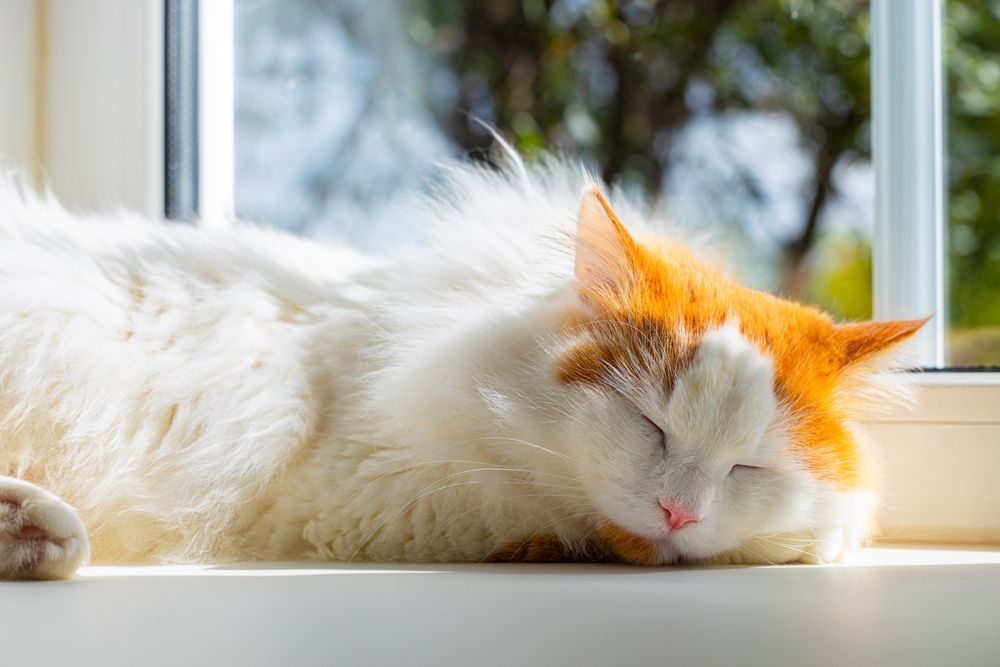
Cats usually regulate their body temperature by resting in the hottest part of the day, and moving to cooler areas when needed.
Cats are masters at keeping cool. Like their wild ancestors, they do most of their exercise – such as playing or hunting – in the cooler parts of the day, which is partly why they’re most active around dawn and dusk. They’re great at finding cool, shaded places for an afternoon nap as it heats up. On a hot summer day, you’ll probably find your cat spread out across a cool surface (like the bathroom floor!) to help dissipate their body heat.
You may also notice your cat grooming more in hot weather. This is because the saliva has a cooling effect as it evaporates, just like sweating. Cats lick across their fur repeatedly in hot weather, using their saliva to keep cool.
This type of grooming is normal in hot temperatures and shouldn’t cause changes in your cat’s fur or skin. However, if you notice areas of short or missing hair or red skin, your cat may be over-grooming. This can be a sign of pain, stress, or a skin problem, so make sure you get them checked by a veterinarian.
How To Tell if Your Cat Is Too Hot
Heat stroke is rare in cats compared to dogs, as they normally exercise on their terms, and don’t ride in hot cars as often. But if they can’t find a shady place to cool off, they can overheat.
This happens most commonly if they get trapped somewhere hot without access to shade and water. But they can overheat at home too. So, whilst cats are good at moderating their temperatures, be sure to keep a close eye on your cat in the warmer months. This is especially important if they are a flat-faced breed, such as Persian or British Shorthair cats, as they can overheat more quickly.
Signs your cat is too hot include:
- Panting
- Restlessness
- Drooling
- Disorientation
- Wobbliness
- Vomiting
- Diarrhea
- Collapse
- Seizures
If you think your cat is suffering from heatstroke you should contact your veterinarian immediately. However, it is important to begin cooling them at home straight away – the faster they cool down, the better their chance of a full recovery.
Move your cat to a cooler spot and apply cold water to their coats and paws. Don’t leave wet towels on their body as this can prevent heat from leaving their body as the towels warm up. Let your vets know what you’ve done so far, and they will advise you on what to do next and when it is safe to transport your cat.
It is important to know that, unlike dogs, panting is not normal in cats. It can be a sign of heatstroke, but it can also indicate other serious problems like breathing or heart issues, as well as pain. If you notice your cat panting, you should contact your veterinarian for advice.
How To Help Your Cat Stay Cool
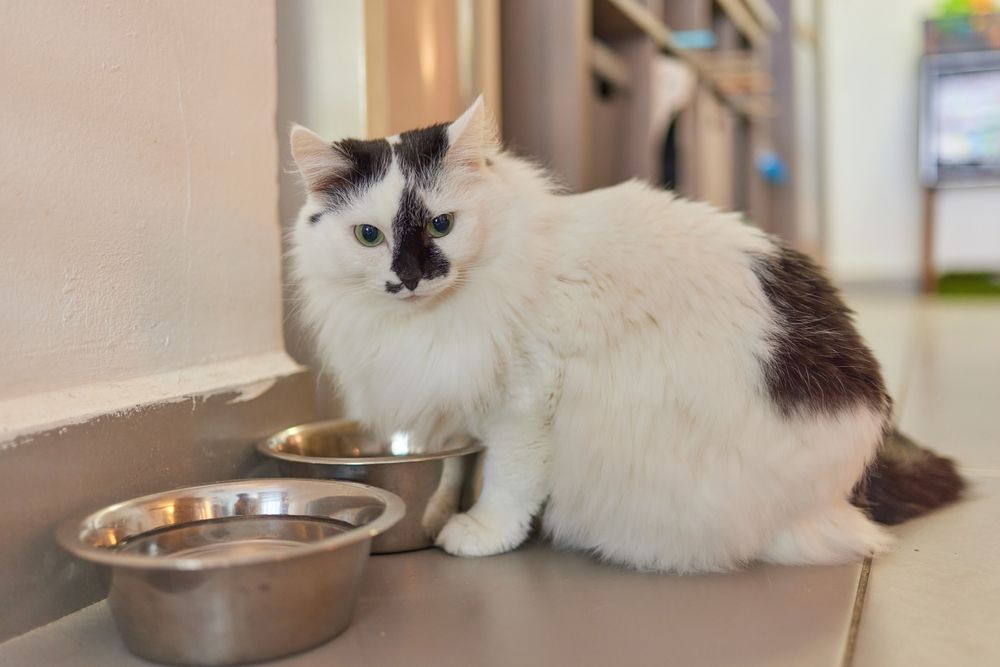
Using ice cubes in water bowls, or as something to play with, can provide entertainment as well as cooling.
For the most part, your cat should be able to regulate their body temperature. But there are plenty of things you can do to help them stay cool in the heat. Here are our top seven tricks:
- Offer plenty of fresh water: Make sure there is fresh water in several locations. You can try adding ice cubes to their water bowl to keep it cool.
- Provide cool areas: Keep certain rooms in the house cool by shutting the curtains and using fans or air conditioning. If your cat likes going outside you can create shaded spots using shelters, parasols or planting.
- Use cooling mats or wrap an ice pack in a towel: Place these near your cat while they rest, never directly on them.
- Groom them regularly: Removing dead hair helps to prevent heat getting trapped in their fur
- Encourage them to play at cooler times of the day: This helps them to feel ready to rest when it is warmer
- Make cat ice lollies: You can freeze stock or the spring water from tinned tuna to make a tasty ice lolly for your cat to lick or play with!
- Keep them indoors: It might be safer to keep your cat inside during the hottest parts of the day (as long as it is cool in your house)
Frequently Asked Questions
Why is my cat sweating?
Cats sweat from their paw pads, lips, and chins when they get hot. However, they don't have sweat glands in the haired parts of their body, so if you've noticed your cat's fur is wet it is more likely to be from grooming - which they also do to stay cool.
Does cat sweat smell?
As cats only have a few sweat glands (on the non-haired parts of their body), it is unlikely your cat would sweat enough to cause an odor. However, they do have lots of scent glands that release pheromones and other scents to communicate with other cats.
How do you know if a cat is too hot?
Cats are usually good at regulating their temperature by moving to a cool area when they get hot. However, they can still suffer from heatstroke. Signs of overheating in cats include panting, disorientation, restlessness, sweaty paws, vomiting, diarrhea, and collapse.
How can I keep my cat cool in hot weather?
Make sure you offer plenty of fresh cool water and provide cool areas for your cat to rest in. You can also use cooling mats or ice packs wrapped in towels, fans, and air conditioning on really hot days. Some cats enjoy licking special ice lollies made by freezing stock or water from tinned tuna.
Do cats have sweat glands?
Cats do have sweat glands, but they are not very effective at regulating their body temperature through sweating as they primarily rely on panting and grooming to dissipate heat while also seeking cooler environments.
Do cats sweat through their paws?
Cats do have sweat glands in their paw pads, they release sweat through their paw pads in minimal amounts, and it's not an efficient way for them to regulate body temperature compared to methods like panting or seeking shade.
